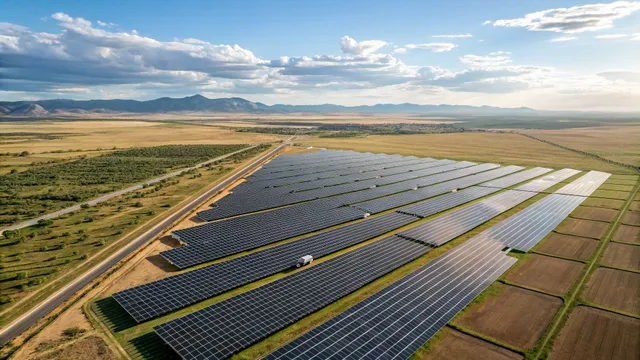Solar energy: is this really "green"?
Greetings friends!
We live in a time in which we are fully dependent on technology. Our machines, homes, buildings, and vehicles all need energy to function. With the global population higher than ever, the demand for energy is soaring up day by day.
Traditionally, we’ve relied on fossil fuels like coal, oil, and gas as well as hydroelectric power from dams. But these methods are expensive and cause pollution. Fossil fuels emit greenhouse gases, while dams disrupt ecosystems. To reduce pollution, solar energy has emerged as a cleaner, more sustainable alternative. Let's explore its potential as well as the dark side.
The Power of the Sun
The sun is our ultimate energy source for us. Fossil fuels and hydroelectric power are just indirect forms of solar energy. Fossil fuels come from ancient plants that absorbed sunlight, and water cycles are driven by solar heat. The sun’s output is about 3.86 × 10²⁶ watts of energy. Only a small fraction of this reaches Earth, but it’s still more than enough for us. Each second, the sun delivers many times more energy to the planet than humans consume in an entire year. This makes solar power an obvious choice because it's clean, renewable, and essentially free once systems are in place.
Photovoltaic Technology: We harness solar power mainly through photovoltaic (PV) cells, which convert sunlight directly into electricity. Thousands of these cells form a solar panel. Depending on materials and conditions, a panel can last 20 to 30 years. We also use solar energy for heating and cooking through solar cookers and thermal systems. These methods reduce dependency on fossil fuels and lower carbon emissions.
The Challenges of Solar Energy: While solar energy has huge potential, it also comes with some serious challenges:
Mining and Toxic Materials
Solar panels are made of various things including heavy metals such as lead, cadmium, selenium, and tellurium. Mining of these materials harms ecosystems and exposes workers and communities to toxic waste. Processing them also produces pollution and hazardous byproducts.Energy-Intensive Manufacturing
Before a panel produces a single watt of clean energy, it goes through stages of mining, refining, manufacturing, and transportation. This whole process consumes large amounts of energy, often from fossil fuels. In some cases, a solar panel must operate for several years just to offset the emissions created during its production.Land and Water Use
While rooftop panels are space-efficient, large-scale solar farms need vast areas of land. This often involves clearing vegetation, disturbing wildlife habitats, and fencing off land from small creatures. In dry regions, cleaning the panels with water becomes another issue. Panels need regular cleaning as dirty panels generate less energy, but regular cleaning strains limited water supplies as well.Recycling and Waste Management
Solar panels become e-waste after their lifespan ends. Many contain toxic materials that can leach into soil and water if not handled properly. There’s currently no large-scale, cost-effective system for recycling solar panels, which will definitely become a major environmental issue as global adoption increases.Energy Storage
Solar power is intermittent as it only works when the sun is shining. At night or on cloudy days, we rely on batteries to store energy. But battery production brings its own set of problems like lithium mining, high costs, and limited recycling solutions. Production of batteries also contributes in generating pollution.
What needs to be done
Solar energy offers massive benefits as it is clean, renewable, and abundant. But to truly call it "green," we must address its environmental and logistical drawbacks first. That means we need:
Developing safer materials for panels;
Improving recycling infrastructure;
Reducing energy use in manufacturing;
Designing solar systems that minimize land and water impact; and
Advancing battery storage technology
Solar power isn’t perfect but it can be a major part of the solution if we deal with the real-world issues now. The future of energy must be sustainable and environment friendly. We must also realize that our world has limited resources while our demands have no boundaries. Our every action causes more harm to environment.
Thank you!

Hi, @akdx,
Thank you for your contribution. Your post has been manually curated.
- Delegate to @ecosynthesizer and vote @symbionts as a witness to support us.
- Explore Steem using our Steem Blockchain Explorer
- Easily create accounts on Steem using JoinSteem
Thanks! I have added @symbionts as witness.
solar energy isn't green. The solar cells are poison and you need many batteries (also not green). It's a big hoax next to the fact there's no way to use "all" the energy. If the governments were that worried they wouldn't force everyone in having the latest cellphone, force upon us the electric car (very bad for the environment), electric scooters and many more. It's not the people but the govs who are the biggest wasters.
The 13 richests people in the world are the biggest wasters on earth and damage more than the entire worldpopulation.
You are absolutely right! The richest, the biggest polluters and this is the truth they wish to hide.